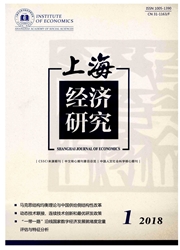

 中文摘要:
中文摘要:
生态脆弱地区的生态环境状况改善和治理一直是各级政府部门和学者关注的焦点问题。过去10余年,中国城镇化进程发展迅速,生态脆弱地区乡村劳动力大量迁出。那么劳动力人口迁出会在多大程度上影响脆弱地区植被覆被状况的变化呢?本研究利用2000-2010年的NDVI数据、气象观测数据和社会经济数据,采用趋势线分析、显著性检验和多元回归分析等方法,对内蒙古地区植被覆被状况的变化进行了分析,并在县级尺度上定量评估了乡村劳动力人口迁移对区域植被覆被状况的影响。结果表明:①2000-2010年,内蒙古自治区植被覆被总体呈上升趋势,其中超过28%的地区植被覆被状况显著改善,只有约2%的地区存在较强的退化趋势;②植被覆被显著退化的地区呈条带状分布于内蒙古自治区中部农牧交错带北部边缘;植被覆被显著改善的地区主要位于内蒙古自治区的东南部与西部地区;③2000-2010年,农业劳动力对植被覆被状况的影响已经超过了气候等自然因素的作用,农业劳动力迁出对植被覆被状况提高有显著的促进作用。
 英文摘要:
英文摘要:
Improving the quality of environment in ecologically fragile areas had been paid much attention by scholars and government at different levels. Over the past decade, a large number of rural labors had migrated into urban areas. To what extent would the migration affect the changes of vegetation cover in ecologically fragile areas? In this study, we analyzed the spatio-temporal variation of vegetation cover and its relationship with human activities at the county level based on the ND~I data with a resolution of 1 km, meteorological data and economic data from 2000 to 2010 in Inner Mongolia. The major methods included trend line analysis method, significance testing and multi-regression analysis method. The main conclusions were as follows: (1) The vegetation cover of the study area increased by 10.1% during 2000-2010. More than 28% of the vegetation cover increased significantly, and only about 2% decreased evidently during the study period. (2) The area with significant degradation presented a banded distribution in the northern fringe of farming-pastoral ecotone in the central part of Inner Mongolia. It is shown that the ecological environment is still fragile in this area, which should be focused on. The area where vegetation cover significantly improved showed a concentrated distribution in the southeast and west of Inner Mongolia. (3) Effects of agricultural labor on vegetation cover had exceeded those of natural factors such as climate. The emigration of agricultural labor had improved vegetation cover significantly.
 同期刊论文项目
同期刊论文项目
 同项目期刊论文
同项目期刊论文
 期刊信息
期刊信息
